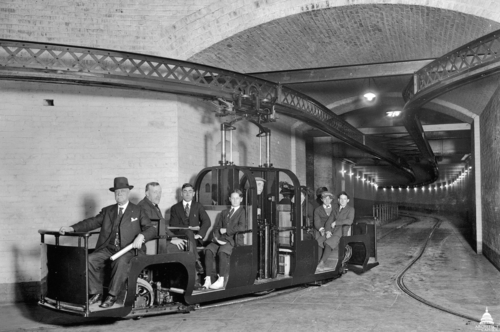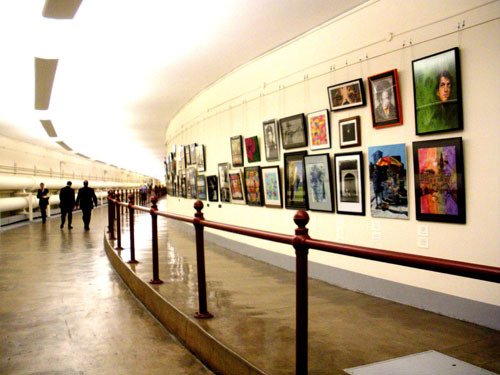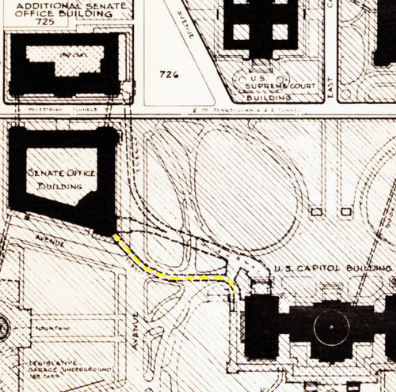There are tunnels under Capitol Hill. Here’s how they got there.
A sprawling pedestrian tunnel system under Capitol Hill allows staffers and members of congress to move underground between the office buildings, Library of Congress, and Capitol building. Today they are an integral part of security on the Hill, but when they were first built it was for a far less important reason.

Back when Studabaker cars ran through the Senate’s tunnels. Image from the Architect of the Capitol.
Originally there were only two tunnels: 1909 passageways that connected the Dirkson and Cannon buildings with the Capitol’s basement. They were built because of Washington’s disgusting weather, not for any security reasons.
The Washington Post wrote in 1907 that “The tunnels have been planned with the idea of providing an easy access to the offices, particularly in bad weather. By using them it will not be necessary for the senators and representatives to go out into the open at all in order to reach offices from the Capitol, or vice versa.”
The Senate, accustomed to greater luxury as the “upper house,” explored several people-mover systems for their tunnel. The House of Representatives thought about it, but ultimately decided that their members could walk. The raised and partitioned walkway in the Cannon tunnel shows where pedestrian traffic would have been separated from the never-built House subway.
Superintendent of the Capitol Elliott Woods initially wanted to use a Tunis Monorail in the Senate tunnel. This ambitious proposal featured an enclosed car that had an aerodynamic shape similar to that of a ship. Passengers would have sat inside on swiveling wicker chairs.
The Senate ended up going with a much more modest solution, bringing in custom-built Studabaker electric cars to shuttle senators back and forth along the short tunnel. The cars are shown in the image at the top of the article.
Enthusiasm was high for the system when it was initially built. Contemporary newspapers were full of stories about senators, tourists, and even Vice President Charles Fairbanks enjoying joy rides on the early automobile.
The Washington Post amusingly wrote that “the question of a speed limit in the subways has not been raised, but there will be no chickens in the road, and as the walk for pedestrians is fenced off, there is thought to be no reason why the senators should not have a run for their money if they wish.”
The cars become a monorail
By 1915 the Senate had tired of the cars and was in search of elegant means of transportation. The Columbia Construction Company built a unique monorail to pass through the tunnels, constructing it at the nearby at the Washington Navy Yard for $9,500.
Senators could summon the carts by ringing a bell three times. According to a Washington Post article from the time, the wicker benches could accommodate “12 senators” or, rather absurdly, “36 pages.”

The Senate monorail, with the front seat reserved for senators. Image from the Architect of the Capitol.
Another new tunnel
In 1958 when the east front of the Capitol was being expanded, they built an entirely new tunnel with a station under the Senate steps. The new tunnel had a modernized subway system, and the old car was moved to the Russell basement rotunda, where you can visit it today.
The old tunnel was repurposed for the Senate recording studio, various mechanical shops, and a fallout shelter.
Crossposted from ArchitectoftheCapitol.org.


